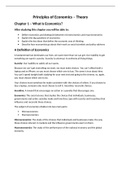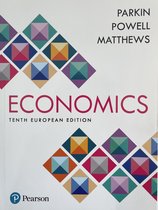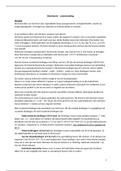Summary
Complete summary of the material required for the 1st year AMSIB Principles of Economics final exam
- Course
- Institution
- Book
This document contains the complete summary for the Principles of Economics final exam held in the 2nd semester at AMSIB, AUAS. Chapters 1, 3, 5, 6, 10, 11, 12, 13, 14, 15, 16 of the book Economics Tenth European Edition written by Parkin, Powell, and Matthews are covered in this summary This su...
[Show more]





